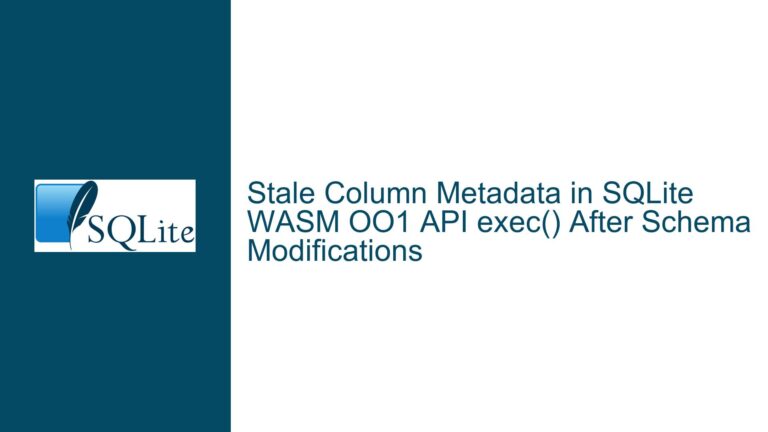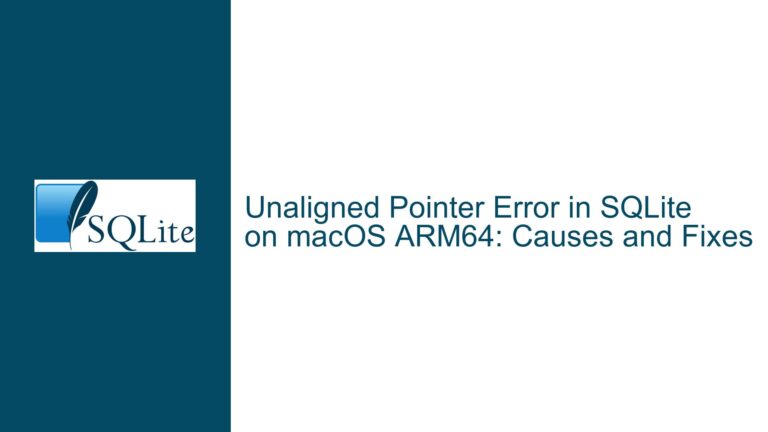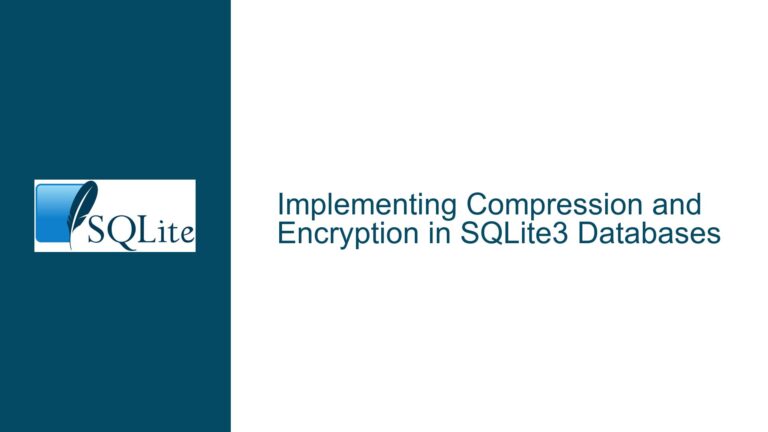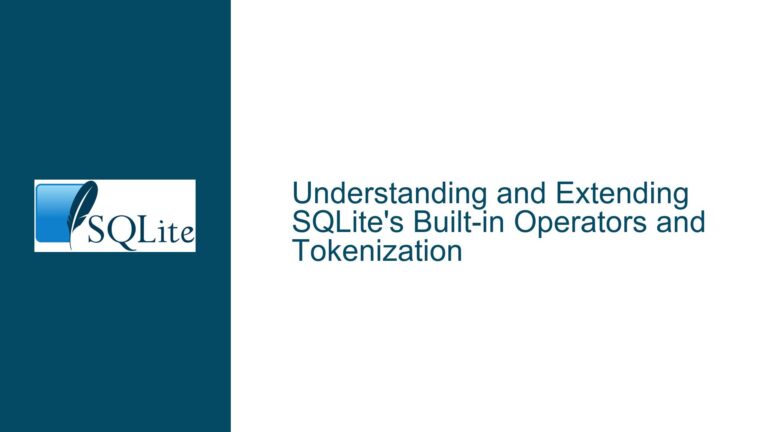Proposed Unix Timestamp Function in SQLite: Precision and Naming Considerations
Issue Overview: Precision and Naming of a New Unix Timestamp Function in SQLite
The core issue revolves around the proposal to introduce a new date/time function in SQLite that converts a given date/time argument into a Unix timestamp. A Unix timestamp represents the number of seconds since the Unix epoch, which is 1970-01-01 00:00:00 UTC. The primary points of contention in this discussion are the naming of the new function and the precision of the timestamp it should return. Specifically, the debate centers on whether the function should return an integer value (discarding any fractional seconds) or a floating-point value that includes milliseconds or even finer granularity.
The proposed function aims to simplify the conversion of date/time values to Unix timestamps, which is currently achieved using the strftime('%s', ...) function. However, strftime('%s', ...) returns a string, and the new function would return a numeric value, making it more convenient for arithmetic operations and comparisons. The discussion also touches on the potential use cases for such a function, particularly in scenarios involving IoT data logging, JSON data interchange, and high-precision timekeeping.
Possible Causes: Naming Conventions and Precision Requirements
The debate over the function’s name stems from the need to make it intuitive and consistent with existing SQLite functions and broader programming conventions. Several naming options have been proposed, including unixtime(), unixtimestamp(), secondssince1970(), and unixepoch(). Each name has its merits, but the choice ultimately depends on clarity and alignment with SQLite’s existing function naming conventions.
The precision of the timestamp is another critical consideration. The Unix timestamp traditionally represents seconds since the epoch, but modern applications often require higher precision, such as milliseconds or even microseconds. The internal representation of date/time values in SQLite is a 64-bit integer count of milliseconds since the Julian epoch, which inherently limits the precision to milliseconds. However, the operating system’s clock granularity further constrains the achievable accuracy. For instance, Windows typically updates the system clock every 16 milliseconds, while Unix-like systems offer nanosecond precision in theory but may not achieve it in practice due to hardware and software limitations.
The discussion also highlights the trade-offs between using floating-point numbers and integers for representing timestamps. Floating-point numbers can represent fractional seconds but are subject to precision limitations, especially when dealing with very large or very small values. Integers, on the other hand, are more robust for equality comparisons and arithmetic operations but require additional functions to handle fractional seconds.
Troubleshooting Steps, Solutions & Fixes: Implementing a Robust Unix Timestamp Function
To address the issues raised in the discussion, the following steps and solutions can be implemented to create a robust and versatile Unix timestamp function in SQLite:
Function Naming: The function should be named
unixepoch()to align with SQLite’s existing date/time functions and to clearly indicate its purpose. This name is concise, descriptive, and consistent with the terminology used in other programming languages and databases.Precision Handling: The function should return an integer value representing the number of seconds since the Unix epoch. This approach simplifies the function’s usage and aligns with the traditional definition of a Unix timestamp. For applications requiring higher precision, additional functions such as
unixepoch_ms()andunixepoch_us()can be introduced to return timestamps in milliseconds and microseconds, respectively. These functions would cater to specific use cases like IoT data logging and high-frequency trading, where sub-second precision is crucial.Internal Implementation: The function should leverage SQLite’s internal date/time representation, which is a 64-bit integer count of milliseconds since the Julian epoch. By shifting this value to start at the Unix epoch and converting it to the desired unit (seconds, milliseconds, or microseconds), the function can achieve the required precision without introducing floating-point inaccuracies. The implementation should also account for the operating system’s clock granularity to ensure realistic accuracy.
Documentation and Examples: Comprehensive documentation should be provided to explain the function’s behavior, including its precision limitations and the rationale behind the chosen naming and implementation. Examples should demonstrate common use cases, such as converting date/time strings to Unix timestamps, performing arithmetic operations, and comparing timestamps in SELECT and JOIN conditions.
Backward Compatibility: The new function should be designed to work seamlessly with existing SQLite functions and data types. This includes ensuring that the function’s output can be used interchangeably with other date/time functions and that it does not introduce any breaking changes to existing queries or applications.
Testing and Validation: Extensive testing should be conducted to validate the function’s accuracy and performance across different platforms and use cases. This includes testing with edge cases, such as dates before the Unix epoch, leap seconds, and time zones, to ensure consistent and reliable behavior.
By following these steps, SQLite can introduce a new Unix timestamp function that meets the needs of a wide range of applications while maintaining consistency, accuracy, and ease of use. The function’s design should prioritize clarity, precision, and compatibility, ensuring that it becomes a valuable addition to SQLite’s date/time functionality.






